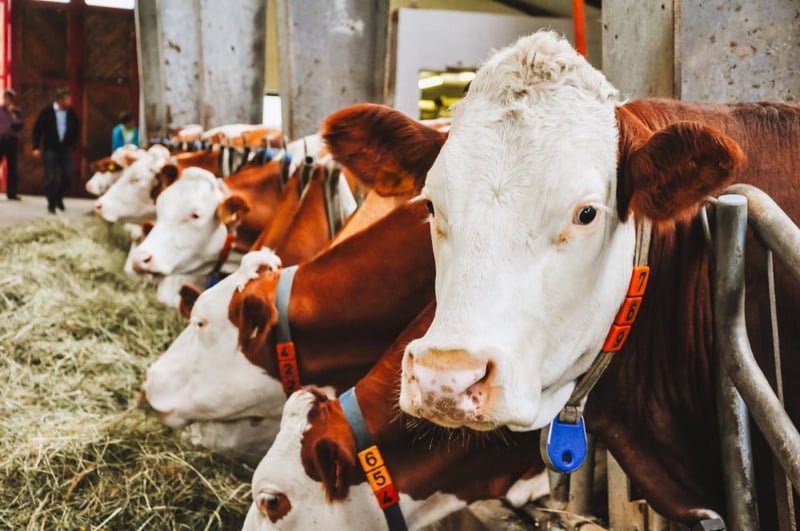
New NOAA Study Says Hurricanes Are Getting Stronger. Here’s What That Means for Farmed Animals.
Blog
A new study released by the National Oceanic and Atmospheric Administration (NOAA) found that hurricanes, typhoons, and cyclones are getting stronger.
Looking at nearly 40 years’ worth of satellite data of global storms, NOAA has reported hurricanes, typhoons, and cyclones are becoming stronger than in past decades, likely a result of climate change as our world warms. According to NOAA’s study, there is an 8 percent increase that storms this decade will become stronger and potentially more deadly than the last decade.
Hurricanes, which are most commonly off the coast of North America, get increasingly more dangerous and destructive and are considered major storms when the hurricane becomes a category 3 or higher. To put this in perspective, a category 3 hurricane has winds sustaining 111-129 mph, snap trees in half, cause major flooding, and can leave areas without electricity or water for weeks. Categories 4 and 5 bring catastrophic devastation when they make landfall.
Jim Kossin, author of the study, told CNN:
“…[D]uring its lifetime, a hurricane is 8% more likely to be a major hurricane in this decade compared to the last decade … Almost all of the damage and mortality caused by hurricanes is done by major hurricanes (category 3 to 5). Increasing the likelihood of having a major hurricane will certainly increase this risk.”
In 2018, Hurricane Florence headed straight for the coast of the Carolinas as a category 5, but ultimately weakened to a category 1 upon landfall. However, the combination of concentration of factory farms and torrential rain led to devastation that is still wreaking havoc on the area today. Multiple hog waste lagoons were damaged or breached during flooding, leaking pollution and contaminants into nearby waterways and soil, killing an unknown number of fish and other wildlife.
It was also reported that 3.4 million chickens and turkeys and more than 5,500 pigs died during Florence—even higher than those animal deaths reported when Hurricane Matthew decimated the same area a few years earlier. These animals drowned in the floodwaters or starved when food and water rations ran out or automated systems failed. An unknown number of animals suffered from injury and diseases following the storms and may have died later or been killed in order to be included in insurance claims. Owners left the barns locked so that the animals would drown so they could collect on the insurance.
While companion animals are mandated by law to be included in government preparedness and evacuation plans during natural disasters, farmed animals aren’t guaranteed those same protections. Having thousands of animals on one farm makes it impossible to design reasonable evacuation or mitigation plans, so farmed animals are locked in sheds—often in cages and crates—where they’re unable to flee the rising floodwaters.
With climate change becoming a growing threat and factory farming being one of its biggest contributors globally, we must take action to protect animals. Farmed animals in the U.S. are concentrated in areas prone to strong hurricanes, tornadoes, floods, earthquakes, blizzards, and wildfires.
We’ve seen what happens to factory farms when a Category 1 hurricane hits, but as climate change continues to threaten our world, more deadly storms will be expected to make landfall. Unless we act now, farmed animals will become increasingly vulnerable.
State governments need to act urgently by ending the use of cages for animals, mandating higher animal welfare standards, and requiring a detailed disaster preparedness plan from every farm that includes limiting the number of farmed animals to levels where they can all be successfully evacuated in the event of an emergency.